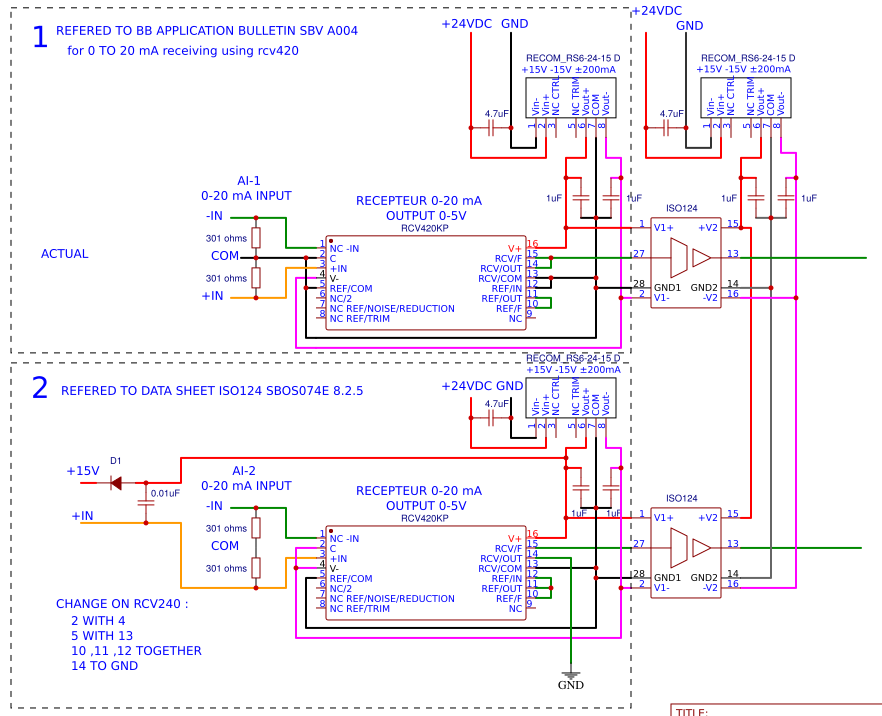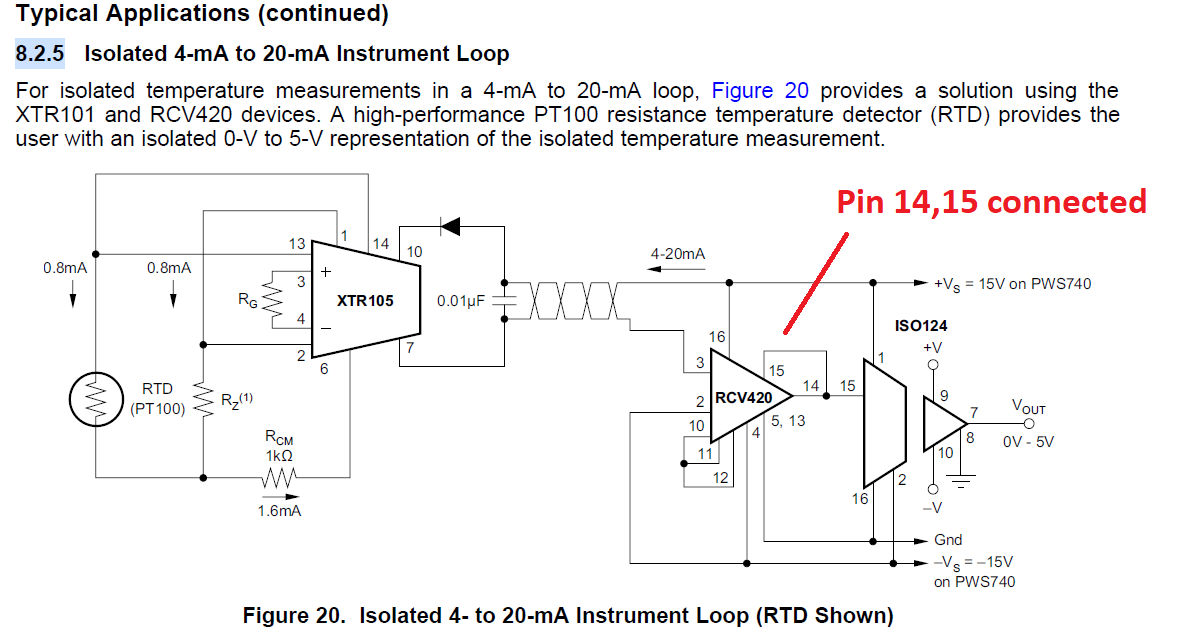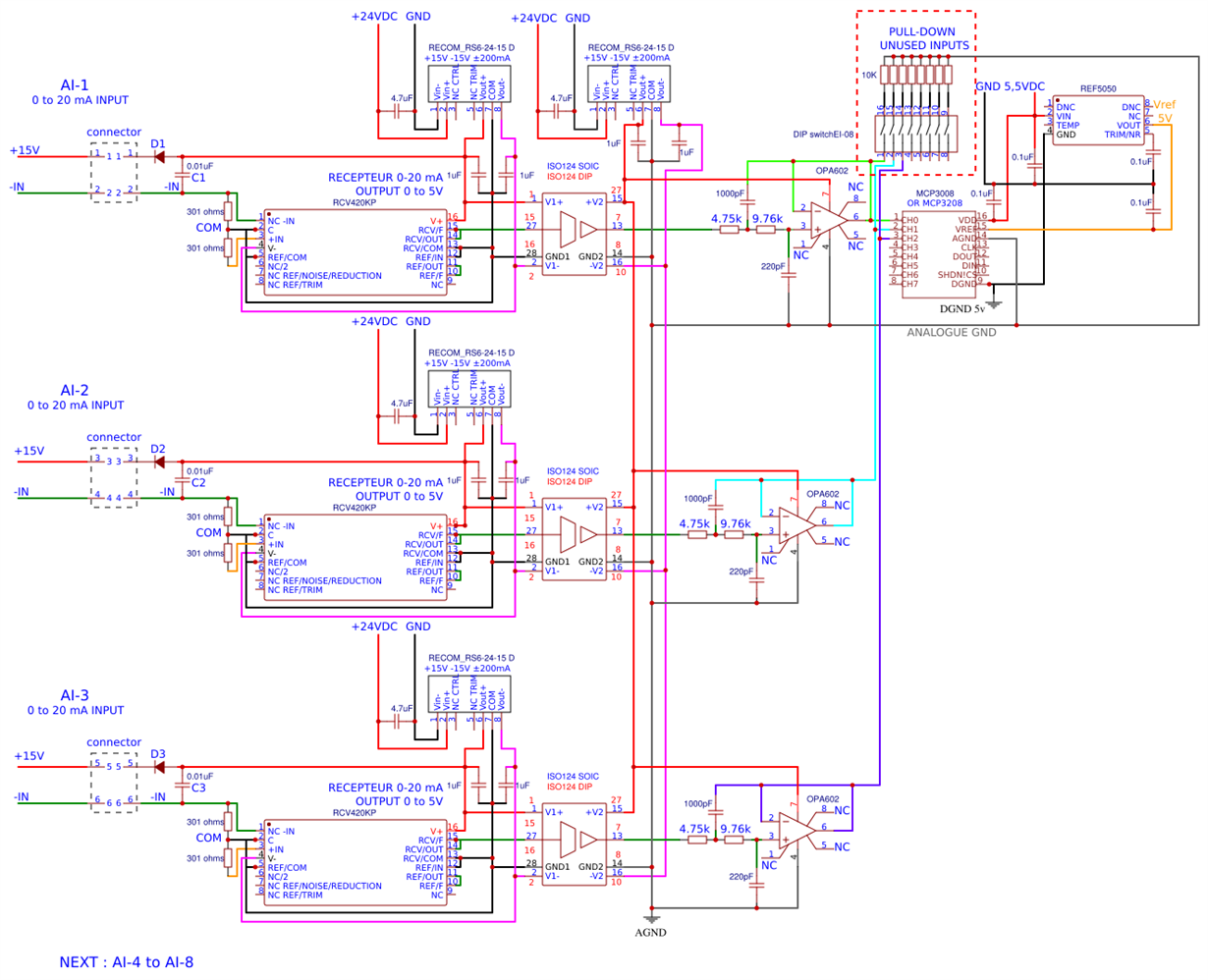Other Parts Discussed in Thread: ISO124, , XTR105, OPA602
Hello everyone,
I want to use a RCV420 with a 0-5v output range and isolated by an ISO124.
with the help Luis Chioye, I followed the example of the application bulletin of BB, (SBVA004).
But when I make the example of 2-wire mounting of the isolator ISO124, (SBOS074A, 8.2.5).
there is a lot of modification on RCV420 connections.
- We lose the common pin 2 for measuring range reduction resistances, for example.
-As I will use several RCV420, the fact that they are connected by the gnd before ISO124 disturbs me.
for me, the insulation is no longer perfect.
attached, an image of the two montages,
can someone explain to me?
is there another way to have a 2-wire mount keeping insulations between the RCV420?
and is the + 15v sufficient to power the 4-20 mA sensor?
Thanks for your help.
richard






